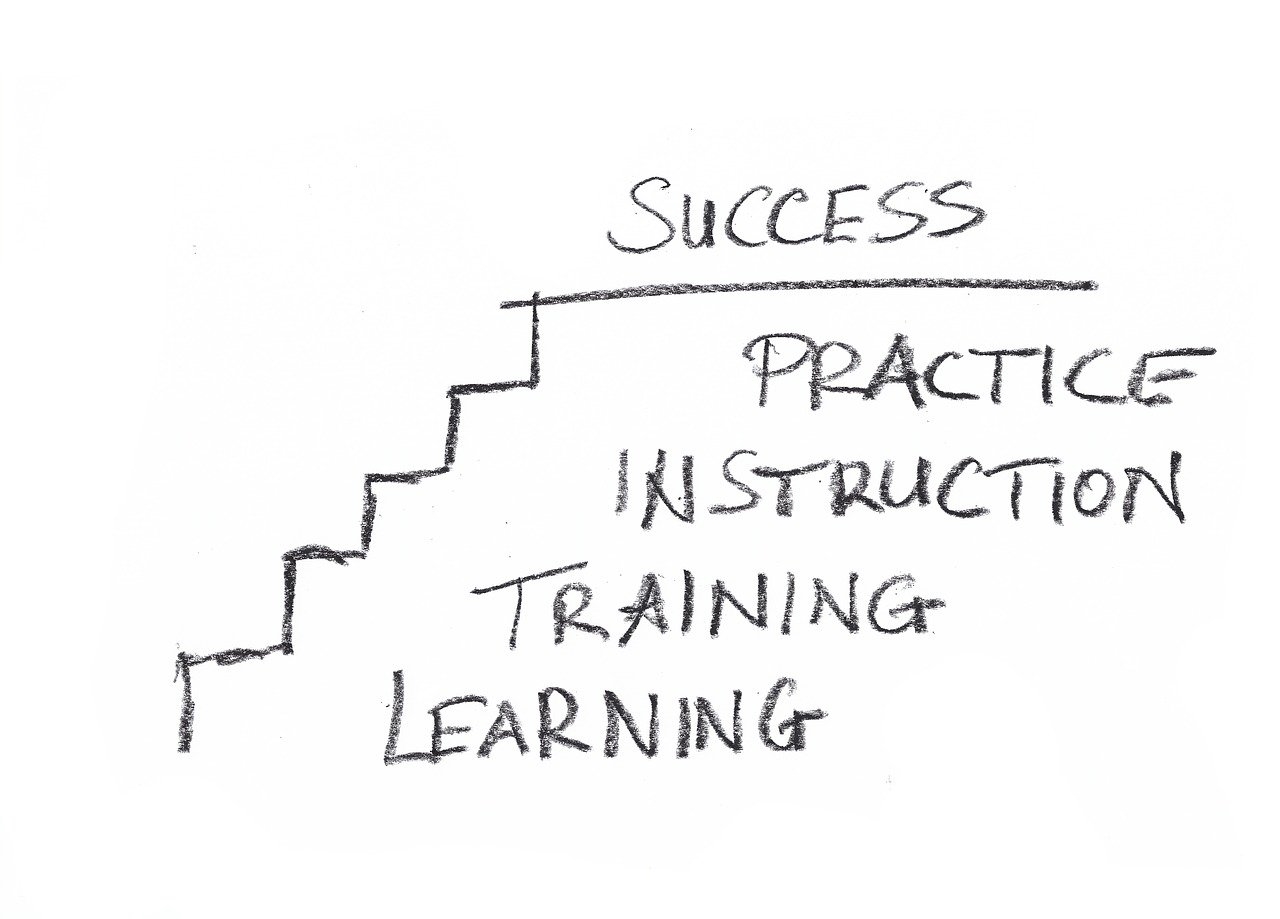Supporting a Diversity, Equity, and Inclusion Strategy by Including Skills-Based Employee Volunteering

geralt / Pixabay
Over the past several weeks businesses across the globe have denounced racism while proclaiming Black Lives Matter. Many acknowledging they can and must do more. But, eliminating overt and covert forms of institutional racism requires a long-term strategy beyond a public statement. It requires an audit (and in many cases reform) of current policy and a proactive commitment to collaborate with community-based organizations. That may be obvious. There’s a fair chance you’re already doing that. But what if I told you that by engaging in skills-based employee volunteerism you’d increase the odds of your diversity, equity and inclusion (DEI) strategy’s success? Would you believe me? Maybe not, but you should. Here’s why.
You see, volunteering is more than just a “nice to have” activity for employee engagement. It’s an opportunity to engage your employees in deliberate skills-based volunteerism (as a form of community service) while also developing the employability of diverse communities you may one day seek to hire. It’s also through that engagement your employees will develop their own skills and emotional intelligence, thus making them better for your company. What’s the end result you ask? To more directly introduce diverse communities to career paths in your industry. If you play your cards right, you’ll create a pathway for new candidates find careers within your company.
Here’s why this works. This type of engagement reaches beyond the passive action of changing the language in job posts and hosting a booths at hiring fairs (which cost time and money and may yield low results). You see, in many cases you must deliberately pursue those you’re seeking to hire. Skills-based employee volunteering acts as a proactive measure that helps you educate those who would otherwise ignore your industry. Through engagement you’ll be able to remove any stigma while also sparking curiosity about potential career paths. At the same time this exposes your employees to new cultures while helping them develop new skills as employees.
Assuming you’ve made a public statement, sought feedback on your public brand perception, reformed policy to be more inclusive and also conducted an audit of your job posts, I recommend creating a proactive skills-based employee volunteering program. What’s even better is that I’m going to share how to do that in this post.
1) Identify your immediate and long-term strategic hiring goals:
This will be industry and sector specific. But first, work with your hiring managers and those in human resources (HR) and talent acquisition (TA) to determine both your immediate and long-term hiring needs. Perhaps your business is growing, and in order to scale your services you need a specific number of employees in front-line positions to meet the demand. This might include positions in sales, customer service, warehouse and fulfillment centers workers, front office or more technically focused tradespersons (i.e., plumbers, electricians, home appliance installers). Work to understand your development pipeline and the time available to fulfill these goals. Once you have a quantifiable number you’ll then need to identify those you’d like to hire.
2) Identify the gaps in diversity within your employee population:
Over the year’s companies have made public and transparent pledges to hire people from diverse communities. These communities have included women, people with disabilities, youth, minority people of color, veterans, refugees and immigrants and the LGBTQ. But, don’t get ahead of yourself. First, take inventory of your current employee base. Through careful surveying and analysis determine your current demographics and your gaps in diversity. Doing so will allow you to make a data-informed decision when choosing the specific communities you’ll actively seek to hire. Having data to support your decision will make it easier to communicate why you’re taking action if you receive public inquiry about the steps you’re taking and why. Without data you run the risk of appearing disingenuous. Additionally, by having data from the start you’ll be able to create a baseline to measure progress against your set goals.

StarGlade / Pixabay
3) Educate yourself on potential cultural and social differences that may present barriers:
There are cultural and social nuances to be aware of regardless of the community you connect with. To overcome these potential barriers, you’ll need to do three things. One, educate yourself on their cultural values that may be shaped by religion, ethnicity and deep-rooted traditions that may be different than yours. This will be important when comparing that to your current organizational culture allowing for successful inclusion. I don’t suggest you attempt this on your own. Instead, connect with subject matter experts who can provide proper culture competency training. Secondly, while working with an expert, conduct an audit (if you’ve not yet done so) of your policies, job descriptions and tools used by your HR and TA teams to ensure they’re inclusive to the community you’re seeking. And lastly, invest in additional sensitivity training for those employees that will be engaged in the skills-based volunteering within that community.
4) Partner with vocational and workforce development organizations:
In many instances you can find community-based institutions whose programming is focused specifically on developing the employability of under-represented communities. Many of these organizations are chartered to provide a wide range of services which may include some of the basics like interview etiquette, “dress for success” advisement, resumé writing, digital literacy training for the online job search, and job placement services. However, you’ll be pleasantly surprised to find that there are organizations whose focus and subject matter is industry specific when it comes to occupational skills training. For example, some organizations like Goodwill focus on training communities for jobs in hospitality, security and loss prevention, and engineering while also providing intensive wrap-around services to ensure successful placement and retention. Other organizations may have certificate programs like that of the National Restaurant Association Education Foundation’s ProStart program, which offers a two-year certificate program for high school aged youth interested in pursuing careers in culinary arts. Some, like FourBlock work with veterans and focus their cohorts on mid to senior level positions with some of the top Fortune companies that work in Professional Services, Information Technology, and Management Consulting. Many of these organizations also partner with companies and businesses to act as trainers, subject matter experts, internship partners and content writers. Similar to those mentioned above, there are organizations that focus on specific minority communities of color. This is where your employees come in.
5) Mobilize your employees:
Identify the employees whose skills match what’s needed for the vocational and workforce development programs you’ve partnered with. Once qualified employees are identified canvas them for two things. One, their interest and commitment and secondly, their feedback on the barriers that may prevent them from participating. It’s not uncommon for companies involved in workforce development and skills-based volunteering to allow participation during working hours, provide Paid Volunteer Time Off (PVTO) or other incentives to encourage maximum participation. One additional incentive you may consider can include tying these skills-based volunteer opportunities to internal performance development, mentorship and leadership skill building opportunities that lead to promotions within your company.

geralt / Pixabay
6) Take actions to educate and develop the hard and soft skills of those you’re serving:
In collaboration with your community partners, decide which types of volunteer opportunities would best serve the community. Be mindful that these should also benefit your industry. Here’s what I mean by that. Yes, this is about serving the community’s needs. However, with deliberate programming you can also introduce the community to your industry in a way that makes them curious and more likely to think of your industry (or company) as a career path when they become employable. By many accounts career exploration professionals and educators share that many students start planning for their careers by their first year of high school. Some even as early as middle school. Employers seeking a sustainable long-term talent pipeline should engage youth at this point in their studies.
However, in recognizing that some companies need qualified candidates much quicker than five to ten years, there are other mechanisms to engage would-be candidates sooner. These more short-term mechanisms include working with organizations that already have job-seeking age program participants. There are many programs that work to reform those who may be homeless, have overcome addiction, or perhaps have never been given a chance as a result of a societal stigma (i.e., those with criminal history or have developmental disabilities).
In either instance both immediate and long-term opportunities will allow your employees to represent your company while providing quick-hit training and career immersion through job shadowing, occupational skills training, tours and walk-throughs of your workspace, presentations on career paths in your industry and how to advance and an opportunity to remove any myths or stigmas that would otherwise turn-off a potential candidate. Additionally, for those immediately eligible for work, your HR and TA professionals can lend their skills to review resumés, provide job and interview etiquette training while also having direct access to program members from that community. The direct access will allow your team to headhunt candidates before they complete their respective training programs. This creates an opportunity to mark someone for recent job openings before a would-be candidate hits the job market. The cherry on top is that these avenues for engaging the community double as developmental opportunities for the very employees participating. Here’s how. As they’re teaching the community about their job, imparting skills and coaching, they’re having to recall their own training and in some cases become better versed in their own job to do so. Additionally, they learn new skills in facilitating, teaching others and mentorship, all of which help them become better employees in the workplace. You may even decide to tie these engagement opportunities to their performance reviews.

ShariJo / Pixabay
7) Create a feedback loop that allows for measurement of positive change for employees:
It’s not enough to simply be involved in these opportunities. You should create a mechanism that also allows for employees to provide feedback through surveying. This feedback loop will allow those who are volunteering to provide insight on critical items moving forward. This may include their experiences as volunteers and perhaps program improvements. But this also includes data on how they’re developing (i.e., leadership, occupational skills, facilitation) as employees resulting from their engagement. When it comes to employee engagement and fostering a positive culture, understanding how skills-based volunteering is adding purpose, a sense of belonging to your company while also adding additional skills to your workforce is imperative. You can also use those statistics (qualitative, quantitative and anecdotal) as data-points for why new candidates should join your company.
8) Open doors to job opportunities for members of diverse communities:
So far, we’ve discussed actively pursuing diverse communities through research, forming partnerships with workforce development programs and engaging employees as volunteers to develop the community members’ skills. However, the end goal (hiring diverse candidates) isn’t achievable unless your HR and TA professionals actively seek the (now qualified candidates) from that same community for hire. Just remember this can’t be a “fire and forget” campaign. What I mean by that is those in HR and TA will be key in providing feedback on the quality of the candidates they screen. This is important because at the end of the day that’s what you want, qualified candidates. They’ll be for first to tell you if you’re hitting the mark in terms of developing the community’s employability. If they give you feedback indicating something is still a miss that’ll inform you of perhaps making necessary changes with the programming.
That being said, in collaboration with your HR and TA, be sure to build the proper process of communication and vetting of candidates. Some organizations will have cohort style graduations that will keep your team abreast of, giving you an ability to connect with candidates before or during graduation. However, the most effective mechanism will be one where your HR and TA collaborate in creating the process (with the workforce development program) where they’ll be informed of qualified candidates ahead of time. This mechanism will allow the workforce development program an opportunity to share program participant resumés weeks in advance, or even create a database of candidates your HR and TA professionals can access “at will” as opportunities become available within your company.
9) provide long-term support to ensure placement and retention of newly hired:
So, you’ve started hiring and placing qualified candidates into vacant positions, now what? Well, it’s not enough that you’re putting butts in seats. You see, you may be hiring candidates from very different cultural and social structures. Some of them may feel they don’t fit in. Because of this I suggest providing job placement resources to ensure retention of newly hired candidates. The great news is some workforce development programs offer this service from six months to a full calendar year after their program participants are hired. They assign caseworkers, coaches, mentors and “peer professionals” who help new candidates adjust to what may be an unfamiliar environment.
But don’t put all the responsibility on that workforce development program, work with your HR to offer company resources. This may include some basics like an orientation, overview of the company and introduction to employee resource groups (ERG) and other wellness programs. But also think about assigning an employee who can shadow and mentor new candidates as they adjust. Studies indicate that turnover is more costly than retaining candidates long-term. Not only that, but this will ensure you’re successful in retaining the diverse population you’re seeking. And ultimately, as you continue to hire more diverse populations these new candidates will serve as great ambassadors for your industry and company in the future.
Digital & Social Articles on Business 2 Community
(34)


